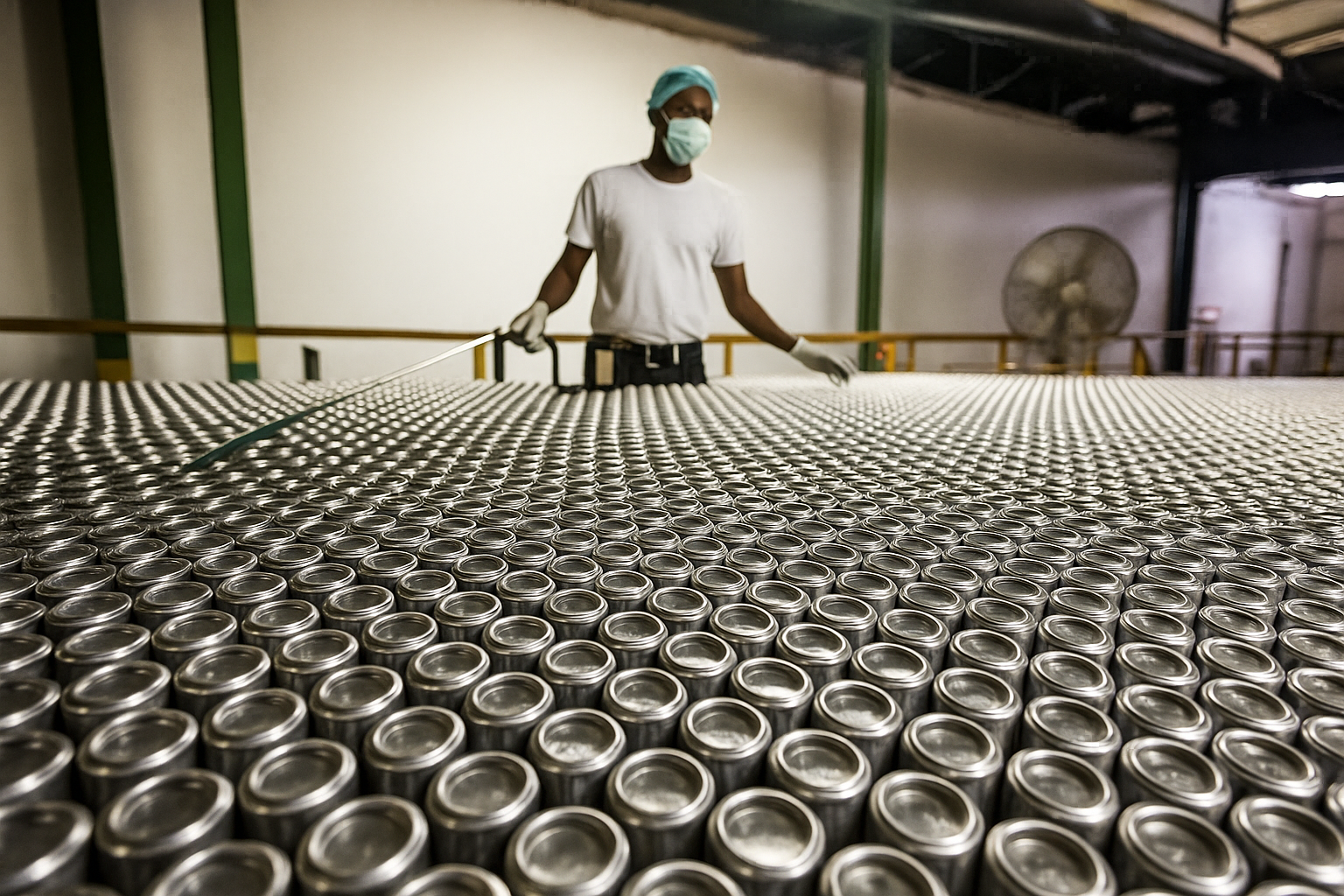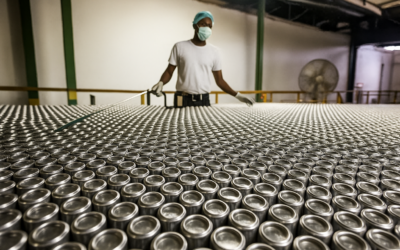Carbon Border Adjustment Mechanism (CBAM)
We advocate for a strong CBAM to phase out the allocation of free emission allowances, address carbon leakage, and accelerate global climate action.
About the CBAM
A carbon policy to prevent carbon leakage
- Carbon leakage is the re-location of emission intensive production from Europe to regions with no carbon pricing or less stringent climate regulations.
- To address carbon leakage, the EU allocates free emission “permits” – also known as “allowances” – to emission-intensive EU industries.
- This free allocation system strongly reduces decarbonisation incentives in the EU.
- The CBAM was created to replace free allocation, thereby unleashing the potential to decarbonise EU industries.
- The CBAM puts a price on greenhouse gases emitted during the production of a list of imported goods, to level the playing field between EU and non-EU industries.
- As the free allocation of emission allowances is phased out, CBAM is phased in, ensuring fair competition and avoiding carbon leakage while setting the right incentives for EU industries
Implementation timeline
- Adoption – 17 May 2023
- Transitional phase – 1 October 2023 – 31 December 2025: A pilot period to gather data on embedded emissions and refine methodologies.
- Start of definitive period – January 2026: Importers must submit yearly reports on imported goods and their verified emissions.
- CBAM gradually replaces free allocation – January 2026 to 2034: Free allocation will be gradually replaced by the CBAM.
Estimated Phase-Out of Free EU Carbon Allowances (2026–2034) in million tonnes CO₂.

Our work
Researching ways to address the CBAM’s weaknesses
For many years, we’ve been conducting research on:
- Emissions and products covered by the CBAM.
- The impact of the CBAM on trade and competitiveness.
- Reporting requirements and methodologies under the CBAM
Advocating for our solutions
As members of the European Commission’s CBAM Expert Group, we provide evidence-based recommendations to enhance the policy’s effectiveness.
Informing and framing the debate
We share our insights and advocate for improvements, in Europe and beyond, by participating in public events. Recent contributions included:
- 𝗦𝗵𝗮𝗻𝗴𝗵𝗮𝗶 𝗱𝗶𝗮𝗹𝗼𝗴𝘂𝗲 𝗼𝗻 𝗽𝗿𝗲𝘀𝘀𝗶𝗻g energy 𝗮𝗻𝗱 𝗰𝗹𝗶𝗺𝗮𝘁𝗲 𝗶𝘀𝘀𝘂𝗲𝘀, as part of China International Import Expo
- High-level conference on CBAM organised by DG Trésor
- High-level conference on the CID organised by France’s Permanent Representation
Latest publications on CBAM
Our achievements
November 2025: Chemicals in the CBAM: Time to step up
Sandbag published a policy brief making the case for extending the EU’s Carbon Border Adjustment Mechanism (CBAM) to chemicals, polymers and refinery products, which together account for around 30% of EU ETS industrial emissions but remain largely outside the current scope. The brief sets out a clear, phased pathway to include chemicals in the CBAM, closing major coverage gaps and addressing carbon leakage at the source.
October 2025: The EU CBAM: a two-way street between the EU and Africa
Sandbag published an analysis assessing limited overall impact of the EU’s Carbon Border Adjustment Mechanism (CBAM) on African exports, using modelling based on the CBAM Simulator. The research finds that while African exporters would face around €1.5 billion in annual CBAM fees, higher EU selling prices would offset a large share of these costs, leaving net costs of approximately €670 million at the continental level. The analysis also shows that impacts vary significantly by sector, with some African industries benefiting from CBAM extensions — for example, net gains for aluminium exports could rise to €160 million under current rules, and up to €300 million if domestic carbon pricing is introduced.
September 2025: CBAM impact on US trade: an analysis
Sandbag published a research note analysing the impact of the Carbon Border Adjustment Mechanism (CBAM) on imports from the United States, using in-house modelling based on the CBAM Simulator and official trade data. The analysis finds that the expected impact on US exporters is modest, with headline CBAM fees significantly reduced once higher EU selling prices are taken into account. Accounting for expected price effects that benefit exporters, net costs fall to €160 million, equivalent to just 0.07% of the value of total US exports to the EU.
August 2025: The EU CBAM: A Two-Way Street to Climate Integrity?
Sandbag published a major analytical report, supported by the Konrad-Adenauer-Stiftung, examining how the EU’s Carbon Border Adjustment Mechanism (CBAM) and the phase-out of free allocation interact to shape climate integrity, industrial decarbonisation and global trade outcomes. The report analyses how the combined implementation of CBAM and the EU ETS free-allocation phase-out affects production costs, prices and revenues for both EU and third-country producers. It shows that, once higher EU prices are taken into account, the net cost of CBAM for third countries is significantly lower than headline fee estimates.
August 2025: Strengthening the CBAM — by default
Sandbag published Strengthening the CBAM by Default, its response to the European Commission’s public consultation on CBAM downstream extension, electricity imports, and anti-circumvention measures. The brief sets out how systematic use of default values can close circumvention loopholes, prevent resource shuffling, strengthen coverage of electricity imports, and enable downstream extension of the CBAM while preserving administrative simplicity, fairness for third countries, and the mechanism’s core objective of preventing carbon leakage.
August 2025: Extending the CBAM to indirect emissions
Sandbag submitted a policy brief to the European Commission proposing the inclusion of indirect emissions from electricity use in the CBAM. The brief sets out how covering indirect emissions would strengthen environmental integrity, reduce distortions linked to Indirect Cost Compensation, and better future-proof the CBAM as electrification increases.
May 2025: CBAM extension: Closing the emissions gap
Sandbag responded to the European Commission’s targeted survey on the future development of the Carbon Border Adjustment Mechanism (CBAM), setting out why extending CBAM horizontally to more products and vertically to key precursors is essential to close remaining emissions gaps. The paper shows how CBAM can support the phase-out of free allocation under the EU ETS and strengthen protection against carbon leakage.
Our messages
The CBAM is an important climate policy that enables the phase out of free allocation under the EU ETS. Our proposals aim to make the CBAM effective at meeting this objective.
Getting the pricing mechanism right
Including indirect emissions into the CBAM.
Including emissions from inputs such as coke, lime, pre-bake anode.
Avoiding circumvention incentives through e.g. resource shuffling
eg. Attributing emissions to aluminium and steel scrap.
Encouraging the use of default values by our trade partners.
Mitigating circulation of carbon price paid in third country.
Simplifying the system
Increasing the minimum intrinsic value (currently 150 EUR per consignment).
Limiting the inclusion of additional downstream products unless absolutely necessary.
Making the use of default values more systematic.
Read our analysis and policy recommendations
The CBAM dividend for Namibia and Ghana
This research note shows that Namibia and Ghana are likely to benefit from the CBAM, as EU price increases linked to the EU ETS outweigh CBAM fees under current exports. It also sets out transparent transformation scenarios, based on announced industrial projects, to show how expanded and lower-emissions production could further increase export revenues over time.
Chemicals in the CBAM: Time to step up
Sandbag’s latest brief explains why the EU CBAM must be expanded to cover key chemical value chains. With chemicals and refinery products responsible for 30% of industry emissions, phased inclusion is critical to prevent carbon leakage and phase out free allowances.
The EU CBAM: a two-way street between the EU and Africa
Sandbag’s newly released CBAM Simulator allowed us to explore how the EU’s Carbon Border Adjustment Mechanism (CBAM) could impact African exporters — and how cleaner production and carbon pricing could turn a cost into a competitive edge.
Get involved
Support our efforts to develop an effective CBAM that benefits the climate, the EU, and its trade partners.

WHAT WE DO
TOOLS
PUBLICATIONS
NEWSLETTER
Mundo-b Matogné. Rue d’Edimbourg 26, Ixelles 1050 Belgium.
Sandbag is a not-for-profit (ASBL) organisation registered in Belgium under the number 0707.935.890.
EU transparency register no. 277895137794-73.
VAT: BE0707935890.







